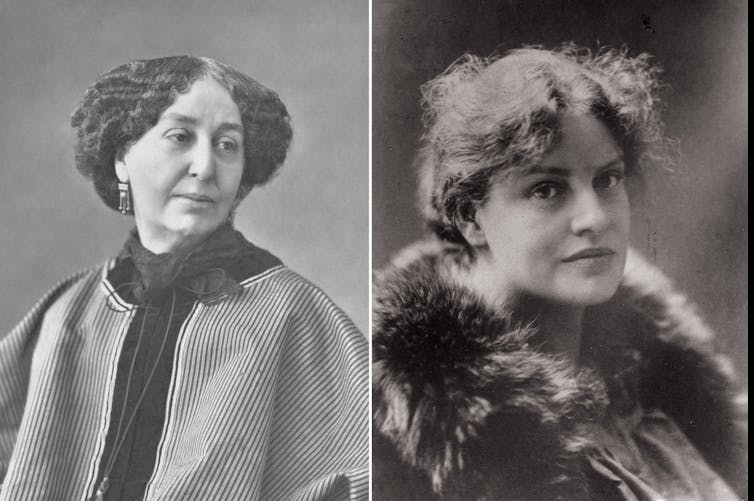Immigration
Canadian immigration: We sponsor spouses — why not friends?

IRCC should rethink how to protect our chosen families and value the interdependence inherent to couples as much as the independence cherished in friendship. (Joshua Sazon/Unsplash)
Faced with the winds of social change, Immigration, Refugees and Citizenship Canada (IRCC) redefined family reunification to include same-sex couples and unmarried partners.
Though its concessions expanded the scope of who one can love and bring to Canada, the last step in our struggle for immigration rights remains to make clear how we love. Is a legitimate relationship necessarily sexual? Is love only between two people? Are friends different than lovers?
At the University of Toronto, I research rebellious historical figures because conservatives often dismiss calls for social change on the basis of their alleged novelty. So to challenge the narrow language of our immigration system, I invite us to return to two bohemian women who did not conform to traditional meanings of love: George Sand (1804 – 1876) and Lou Andreas-Salomé (1861 – 1937).
Socially sanctioned love
A claim for family reunification with the IRCC requires evidence that applicants normally present themselves in public as a couple.
Sand’s trailblazing literary debut, Indiana (1832), criticized the social spectacle expected in modern love. The novel’s happy ending saw Indiana and her cousin Ralph flee the salons of Paris, immigrate to a remote French colony and marry each other.
In her book Lélia (1833) — which the Vatican rushed to index in their list of prohibited books — Sand depicted another independent woman who, willing to be neither single nor part of a couple, wavered between life as a prostitute and life in the desert.
Andreas-Salomé herself immigrated from Russia to continue her studies in Switzerland after her intellectual mentor wanted to marry her though she was still a teenager. Andreas-Salomé rejected two more marriage proposals before the age of 21 — Friedrich Nietzsche’s and his friend Paul Rée’s — and she instead offered them an alternative. Although illegal at the time, she proposed a life together, all three, in one Berlin apartment.
Nietzsche and Rée dismissed her dreamed community as a folly of youth. Fifty years later, however, Andreas-Salomé defended the principle underpinning her unholy trinity: lovers ought to worship not one another but the same god.
Sand and Andreas-Salomé’s aversion to conventional relationships — and the public’s inability to understand their choices — illustrate how intimate relationships can come in a variety of shapes and sizes. Such examples of unconventional love should remind us that when evaluating its applications, Canada’s immigration system shouldn’t rely on society’s seal of approval.
Friends without a sexual rapport
The IRCC considers only relationships with a physical nature, as well as a significant degree of commitment.
Sand is known for her romantic vacations with Alfred de Musset and Frederic Chopin — but she insisted to them having their own bedroom. Andreas-Salomé married Carl Andreas and remained his wife for more than 40 years — but they never had sex.
Neither women were prudes and each collected a fair share of sexual partners: it was their notion of sexual pleasure and commitment which differed from our own.

On the left is George Sand and the right is Lou Andreas-Salomé. (Nadar/Wikimedia Commons, Atelier Elvira/Wikimedia Commons)
“A woman has no other choice than to be unfaithful or to be only half herself,” Andreas-Salomé mused in her private journal. “In her love she is like a tree awaiting the lightning which will sunder it, but also like the tree, she desires to put forth an abundance of blooms.” Andreas-Salomé conceived pleasure and commitment in organic terms: duty toward human nature, not our partners.
Sand similarly advocated for a collective love devoted to fraternal ideals, especially leading up to the 1848 French Revolution which she had ushered in. In Lucrezia Floriani (1847) she writes, “Love me as a sister, and not in any other way.”
In a letter to Andreas-Salomé, Austrian poet Rainer Maria Rilke tapped into a similar fraternal love: “we were rather like primal siblings.”
Sand and Andreas-Salomé’s championing of asexual — or differently sexualized — romantic relationships points to the importance in acknowledging different relationships and intimacy. This is something Canada’s immigration system should be equally open to considering when defining a physical relationship.
Between independence and family
The IRCC permits applicants to prove their relationship via a demonstrated interdependence. This requirement defies Andreas-Salomé’s theory of positive narcissism.
She conceived a natural egoism central to ecosystem interdependence, “like the plant that remains attached to the ground, though it moves away from it so that it can grow in the light.”
IRCC applicants are finally granted their unification request if they have children together. “Marry a friend to have children,” Sand once advised — and some Canadians are actually opting to have children with their friends, but Sand’s poetic ideal was more ambitious:
“Let us love each other, not to be happy in a two-fold egoism, as some call love… but to seek together what us two, poor birds lost in a storm, can do, day by day, to avert this curse which disperses our race, and to gather under our wing a few fugitives crushed like ourselves by terror and distress.”
The French novelist blurred the line between procreation and protection. Like Sand, the IRCC should rethink how to protect our chosen families and like Andreas-Salomé, it should value the interdependence inherent to couples as much as the independence cherished in friendship.![]()
Rayyan Dabbous, PhD Candidate, Center for Comparative Literature, University of Toronto
This article is republished from The Conversation under a Creative Commons license. Read the original article.





















